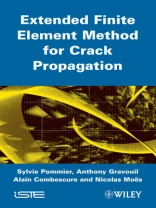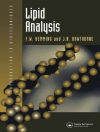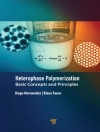Novel techniques for modeling 3D cracks and their evolution in solids are presented. Cracks are modeled in terms of signed distance functions (level sets). Stress, strain and displacement field are determined using the extended finite elements method (X-FEM). Non-linear constitutive behavior for the crack tip region are developed within this framework to account for non-linear effect in crack propagation. Applications for static or dynamics case are provided.
Daftar Isi
Foreword xi
Acknowledgements xiii
List of Symbols xv
Introduction xvii
Chapter 1. Elementary Concepts of Fracture Mechanics 1
1.1. Introduction 1
1.2. Superposition principle 3
1.3. Modes of crack straining 4
1.4. Singular fields at cracking point 5
1.5. Crack propagation criteria 10
Chapter 2. Representation of Fixed and Moving Discontinuities 21
2.1. Geometric representation of a crack: a scale problem 22
2.2. Crack representation by level sets 29
2.3. Simulation of the geometric propagation of a crack 52
2.4. Prospects of the geometric representation of cracks 66
Chapter 3. Extended Finite Element Method X-FEM 69
3.1. Introduction 69
3.2. Going back to discretization methods 70
3.3. X-FEM discontinuity modeling 79
3.4. Technical and mathematical aspects 94
3.5. Evaluation of the stress intensity factors 98
Chapter 4. Non-linear Problems, Crack Growth by Fatigue 109
4.1. Introduction 109
4.2. Fatigue and non-linear fracture mechanics 114
4.3. e Xtended constitutive law 137
4.4. Applications 164
Chapter 5. Applications: Numerical Simulation of Crack Growth 173
5.1. Energy conservation: an essential ingredient 173
5.2. Examples of crack growth by fatigue simulations 182
5.3. Dynamic fracture simulation 192
5.4. Simulation of ductile fracture 207
Conclusions and Open Problems 227
Summary 233
Bibliography 235
Index 253
Tentang Penulis
Sylvie Pommier, ENS-Cachan, France.
Anthony Gravouil, INSA de Lyon, France
Nicolas Moes, Ecole Centrale de Nantes, France.
Alain Combescure, INSA de Lyon, France.












